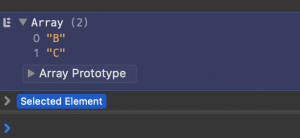

The reason for this change is to enable slice to behave rationally for Array subclasses.

In the default case like above, this will be the a new Array instance using the Array of the realm associated with the this value. At the same time, it uses species to create a new array instance to be returned. If the specified number of elements to insert differs from the number of elements being removed, the array's length will be changed as well. In ES6 slice returns an object that is determine based upon the actual this value passed to slice. The splice () method is a mutating method.

Elements of the original array are copied into the returned array as. The problem is that in ES<6 slice always returned a new Array instance using the Array of the realm associated with the invoked slice function. It contains well written, well thought and well explained computer science and programming articles, quizzes and practice/competitive programming/company interview Questions. It returns a shallow copy of elements from the original array. instanceof is not a reliable test for array-ness when objects flow between realms.

var g = newGlobal( "new-compartment") //or any non-standard mechanism to get a handle on another realm's global objectĪlso note that if the instanceof tests above were replaced with Array.isArray(g.a) you would get all trues in both ES5 and ES6. O método slice () retorna uma cópia de parte de um array a partir de um subarray criado entre as posições início e fim (fim não é incluído) de um array original. array.slice(from, until) From: Slice the array starting from an element index Until: Slice the. Slice ( ) The slice( ) method copies a given part of an array and returns that copied part as a new array. Here is one of the test cases André is talking about. An array with different data types: string, numbers, and a boolean. It is giving error that exercises.Very interesting. I am building an exercise website using react js but I am having issues with.


 0 kommentar(er)
0 kommentar(er)
